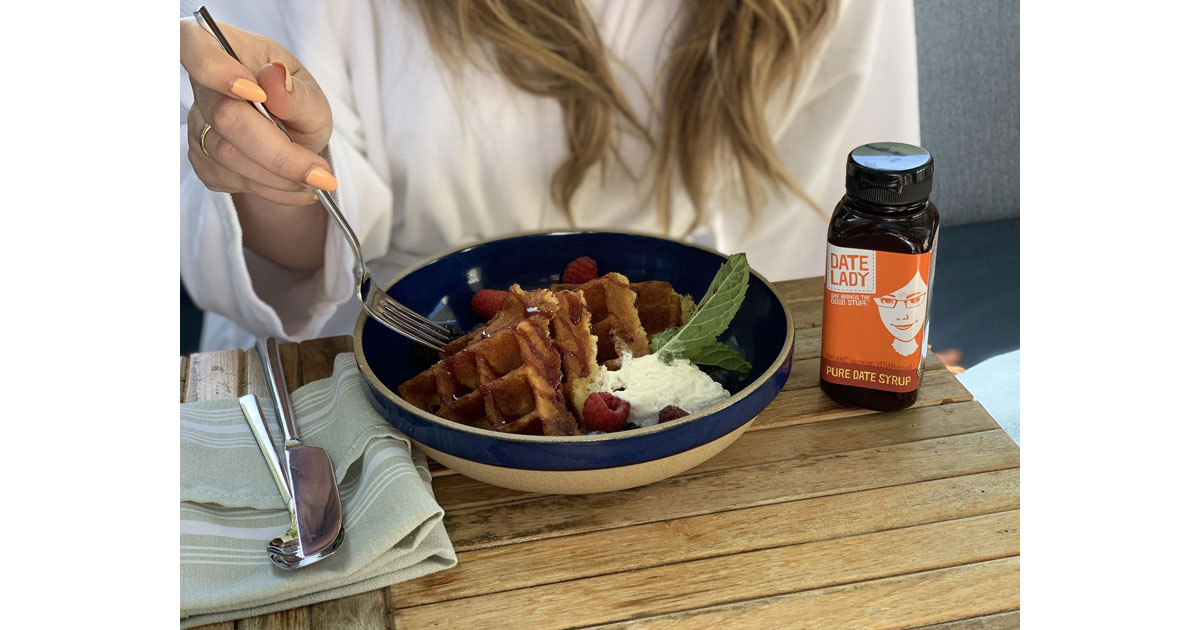SURVIVING & THRIVING ON YOUR VACATION WITH CELIAC DISEASE, FOOD INTOLERANCES & SENSITIVITIES
By Christina Kantzavelos
On this episode of Big Blend Radio, Christina Kantzavelos shares how to survive and thrive on your vacation if you battle with celiac disease, food intolerances, and sensitivities.
Traveling with food restrictions can seem daunting. It’s anxiety provoking to think you may not have hotel or dining options where you are going, let alone the possibility of a reaction. Although these are risks are real, they can be mitigated with proper preparation using the right tools and resources.
1. Research and Planning
Research and planning before traveling will save you time, stress, and a literal headache during your adventure. Research the type of cuisine that will be available to you, and if there are specific plates that are naturally gluten or allergen-free. For example, tamales and tacos are generally safe foods in Mexico, both being corn-based and filled with whole food ingredients. Are there local brands or restaurants that are safe for you to visit? How about grocery stores nearby your hotel? Check out local associations Celiac and other Allergen-Friendly Associations to see what information they have posted (sometimes they even host gatherings!). Also, browse other blogs that have written posts on your destination, and create a list of restaurants to visit.
It is always a good idea to research English-speaking hospitals and clinics in the area …. just in case.
2. Carry a Translation Card for Food Allergies and Restrictions
Allergy Translation cards convey your list of food restrictions, in terms the person reading it will understand. Most people in the USA don’t know what ‘gluten’ means, let alone anywhere else. While you’re at it, use a free language app, like Duolingo to learn some basic words and phrases. It’s helpful, and a nice gesture.
3. Medication(s), Supplements, Toiletries
In addition to packing your usual medical arsenal, I recommend including anything that would help you in case you were exposed to something that causes a reaction. For example, I bring my EpiPen wherever I go, because I have a history of anaphylaxis. I also pack enzymes, and carry activated charcoal to mitigate exposure stress. Medication for migraines, elemental magnesium for regularity, an inhaler for my seasonal asthma, and electrolyte supplements to assist with hydration, and keeping my dysautonomia at bay.
Best to practice the mentality of ‘hope for the best, and prepare for the worst.’ Make sure to pack everything in your carry-on (you wouldn’t want your checked-in pharmacy getting lost), and carry at least a few days extra, in case your return trip is delayed. Lastly, pack toiletries that you are not sensitive to, such as shampoo, conditioner, lotion, toothpaste, hand sanitizer, etc. You can also pack your own detergent for longer trips, and/or bring your own sheets or sleeping bag slip to sleep in, in case there aren’t allergen-friendly options.
4. Mobile Applications and Website Resources
There are plenty of free food apps and websites out there that will tell you where to find allergen-friendly food. I personally like to use Find Me Gluten Free, The Coeliac Plate, and the Nima App, which list gluten-free restaurants/venues in each city. You can use them for both preparation and when you’re on-the-go.
5. Grocery Shop
Get to know your local grocery store, wherever you’re staying. You can buy whole foods to cook with, or snacks to eat on the go. Sometimes, you might be surprised that they even have a gluten free or vegan section.
6. Private Kitchen
If you have access to your own kitchen in your B&B, apartment, or hostel, you can buy your own ingredients locally and cook meals. Always thoroughly clean ahead of time to ensure there is no cross-contamination, and pack a spatula, wooden spoon, and parchment paper for the pots and pans. There is also the option of carrying an instant pot if you are on a road-trip, or, are able to carry it with you. I have a great time using local whole ingredients to create healthy meals while traveling.
7. Carry Food Staples
Depending on the trip, I prefer to carry some staples with me. I also carry snacks to back me up, just in case I am unable to sustain myself with the food available. These include, but are not limited to:
- Nutrition bars – Sometimes it’s difficult to get in the calories you need, and these are easy to carry.
- Condiments (i.e. GF soy sauce packets, sriracha) – To add taste to anything!
- Nuts or Seeds, and nut or seed butter packets – Also easy to carry, and great for protein intake.
- Trail Mix – Pre-packaged trail mix is easy to stuff in any bag when you’re on the go.
- Meat sticks – Extra protein, and easy to pack.
8. Reusable Toaster / Grill Bags
Reusable Toaster and Grill Bags are great if you are staying in a B&B, hotel or visiting a cafe with a toaster, or grill. They prevent cross contamination! They are also great to toast or grill entire sandwiches in, holding all of the good stuff together.
9. Travelers Insurance
Travelers Insurance can help reimburse you, in case you are hospitalized, or need to leave your trip prematurely or on an emergency basis. It’s great to have, especially if your personal insurance doesn’t expand past your state, or country.
10. Request a Gluten-Free, or Allergen-Friendly Meal from the Airline
Most international airlines offer gluten-free, and other meal alternative options. It’s usually an option while booking your flight, however, you can always call them to request it after. If you have a peanut allergy, you can let the airline know ahead of time, so they don’t serve peanuts as a snack. I also recommend bringing your own snacks on the flight, in case you need a back-up. And don’t forget to drink a lot of water! It’s a literal desert up in the sky.
11. Request a Gluten-Free, or Allergen-Friendly Meal and/or Room from the Hotel
You can contact the resort, hotel, B&B ahead of time, to see if they can cater to your dietary restrictions. Many will be happy to accommodate. Many hotels have allergy-friendly rooms, that do not use harsh chemicals, which is available on a request only basis. There is also the option of staying at places that completely cater to your diet, like a 100% gluten-free B&B.
12. Let NIMA do the dirty work for you…
All hail citizen science. Nima is a portable gluten and peanut sensor that tests your food for you (up to 20 PPM of gluten), before you decide to munch on it. Keep in mind, it can’t test for gluten in fermented items (i.e. soy sauce, and beer). If you don’t want to purchase the device, then you can use their free app to see what has already been tested by other Nima users.
13. Food Sensitivity Test
I like to be 100% sure that I am not consuming anything that will cause an instant or delayed sensitivity, or allergic reaction. This is why I recently purchased an at-home Food Sensitivity Test from EverlyWell, which measures your body’s response to over 96 foods.
14. Feel like you accidentally consumed gluten?
Getting sick on a trip can happen, and now we are finally able to rule out whether gluten was the culprit, with Gluten Detective. They have both urine and stool tests that are easy to pack and use.
15. Meditation
I know stress and anxiety exacerbate my reactions, so I recommend meditating, especially when traveling, to keep you calm and relaxed as you taste your way around the world. There are plenty of great apps out there to get you started, like Breathe.
As always, Bon Voyage, y Buen Camino
Christina Kantzavelos is a San Diego-based gluten-free and autoimmune disease-friendly travel and lifestyle blogger at https://www.buenqamino.com, as well as a licensed psychotherapist (LCSW), and professional content writer. Her passion is in communicating, traveling and helping others. She was diagnosed with celiac disease in 2012, in addition to other autoimmune diseases and food intolerances. She does not let her restricted diet restrict her from enjoying life, or traveling and wants to ensure it doesn’t stop others from doing the same. Her gluten-free blog, BuenQamino is full of resources, from articles, guides, reviews, health insights, recipes, support, personal insights, journals, tips, observations, videos and more!
 |
 |














